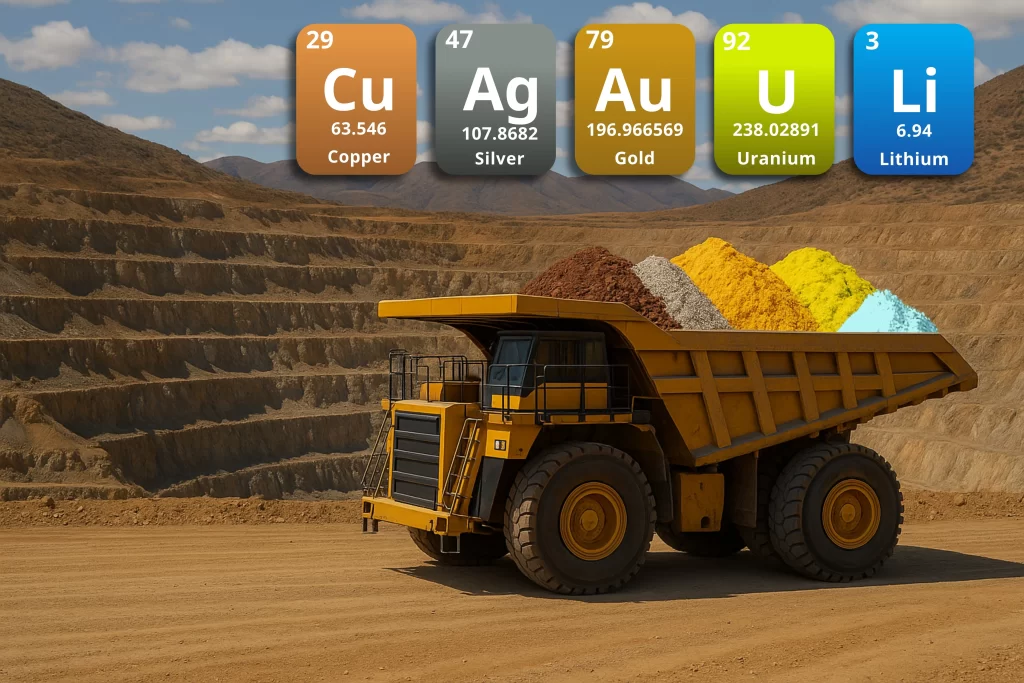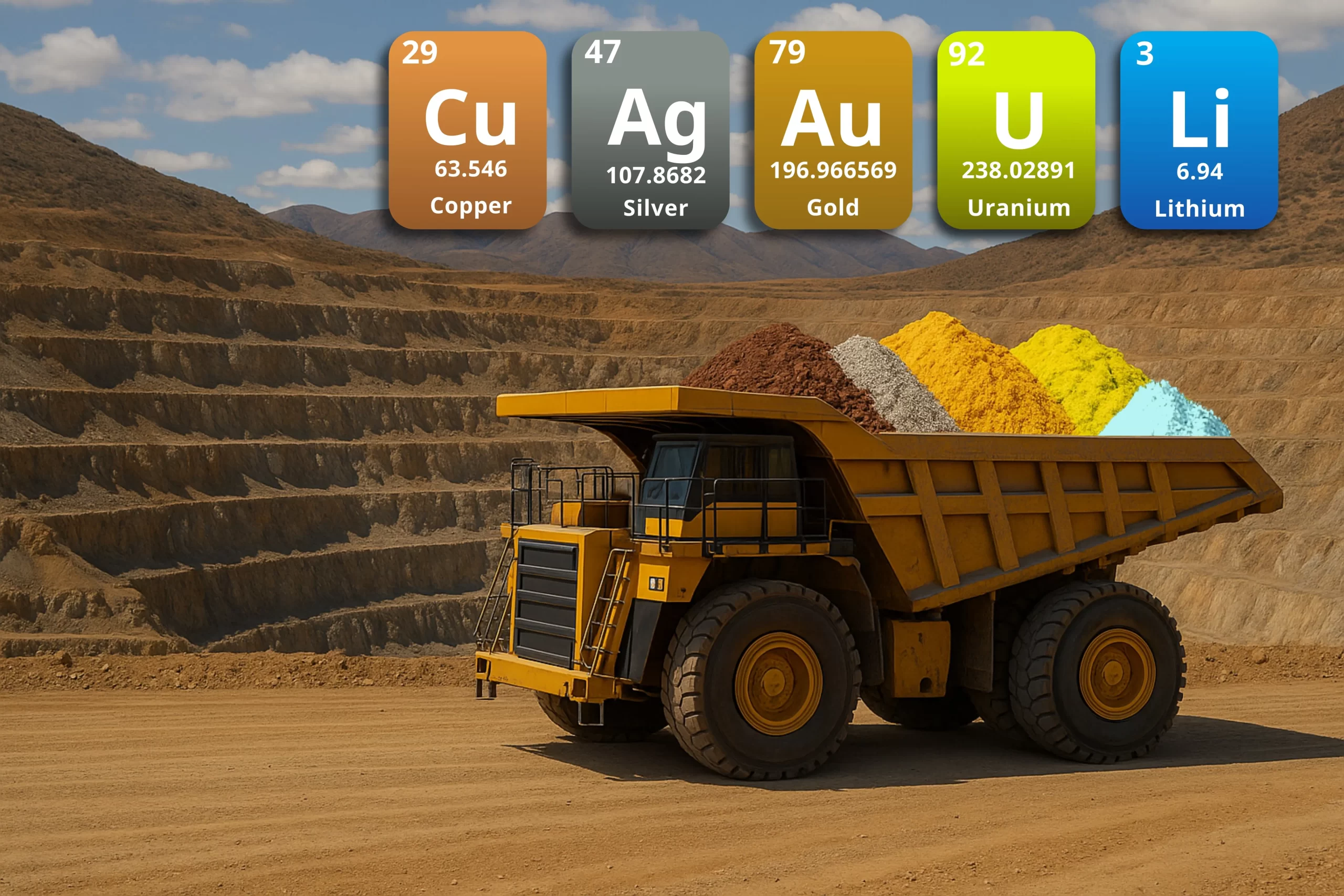Argentina redefines its mining profile:
from an emerging power to becoming the strategic backbone of the global energy transition

With lithium production on the rise, a multi-million-dollar portfolio of copper projects, the reactivation of uranium and the innovation in gold and silver, the country is moving towards a new mining model based on sustainability, technology and national added value.
As for mining, Argentina is at a turning point. The global growth of the demand for strategic minerals, boosted by the energy transition, the electrification of transport as well as the emerging technological needs has placed the country in a unique position of opportunity. With record investments, world-class projects and a renewed fiscal and regulatory framework, the country is beginning to consolidate a modern, sustainable and competitive mining model.
Copper: the metal of the future
Argentine copper, historically relegated to Chile and Peru, is poised to be a key player in the next decade. It is not surprising that the United States Geological Survey (USGS) has ranked the country among those with the greatest potential in the world for having numerous undeveloped copper deposits. With an estimate of 66 million tons of reserves – 2% of the world’s total, according to S&P Capital IQ- and a privileged location in the Andean provinces, Argentina has at least six megaprojects that could place it among the main ten global producers .
Jose Maria (San Juan), El Pachon (San Juan), Mara (Catamarca), Taca Taca (Salta), Los Azules (San Juan) y Filo del Sol (San Juan) are deposits at varying degrees of exploration and development that represent a combined investment of more than $ 21 billion and an estimated production capacity of 810,000 tons per year. If implemented as planned, they could generate exports of more than 6,5 billion dollars a year by 2030. In this way, regional economies will be strengthened and thousands of jobs will be created.
However, the progress made by Argentine copper still faces challenges: lack of infrastructure, logistic complexities up to uncompetitive taxation until recently. The implementation of the Large Investments Incentives Regime (RIGI), which reduced the effective tax burden to 39 %, aims at reversing this situation and attracting the capital needed to transform potential into production.
Gold and silver: innovation to prolong the value
Faced with the depletion of mature deposit, leading gold and silver companies are betting on technological innovation and continuous exploration. Veladero (exploited by Barrick Gold) and Cerro Negro (exploited by Newmont) are two emblematic examples.Millionaire investments in operational intelligence, water recycling, precision machinery as well as extension of reserves allow them to maintain their productivity, reduce environmental impact and generate employment and fiscal resources for San Juan and Santa Cruz.
Moreover, Lunahuasi project in San Juan, combines copper, gold and silver in one of the world’s most promising discoveries. It is operated by NGEx and shows high grade results in all directions, making it a strategic asset in Argentina’s critical metals portfolio.
Currently, exploration at Lunahuasi continues with four rigs on site searching for new deposits of metals and critical minerals. The company has stated that the latest results point at the presence of a significant mineral deposit towards the west, with longer intervals of disseminated mineralisation.
Uranium: between reactivation and federal dispute
The recent announcement of the Argentine Nuclear Plan, launched by Javier Milei’s government, has placed an unthinkable player at the centre stage up to the moment: uranium. Argentina, which has a consolidated nuclear industry, has imported uranium for almost three decades, despite having identified reserves of 33,780 tons mainly in the provinces of Chubut, Mendoza and Rio Negro.
Demian Reidel, head of the President’s Council of Advisors and in charge of the Nuclear Plan, has repeatedly explained that if the county manages to develop and commercialise small modular reactors (SMRs), as well as meeting the energy demands of new artificial intelligence industry and the large data centres, it will also be able to sell uranium in a very advantageous international position.
In this regard, the first moves to develop the sector have started to be seen.: Corporación América’s entry into uranium mining with Ivana project, in Rio Negro, stands as a milestone in this sense. It is a 160-million-dollar investment with which Eduardo Eurnekian’s holding company seeks to supply both the local and international markets.
In the meanwhile, the province of Chubut opened up a political front with the Nation when demanded the reversion of Cerro Soto deposit-the largest of the country-which has been in the hands of the National Atomic Energy Commission (CNEA) up till now. This dispute concerning the ownership and rate of investment in uranium resources, has rekindled the debate on mining federalism, social licence and the reactivation of the sector under new low-impact technologies such as in situ leaching.
Lithium: record production within a challenging context
Despite the fall of international prices, lithium production in Argentina has not stopped. In 2014, it reached 75,000 tons of lithium carbonate equivalent (LCE), a growth of 62 % over the previous year. By 2025, the projection of the Argentine Chamber of Mining Companies (CAEM) anticipates a 75 % increase and reach 131,000 tons, thanks to the ramp-up of Cauchari-Otaroz, the expansions of Salar Olaroz and Fenix, and the start-up of Sal de Oro.
However, export revenues fell by 24 % due to the collapse in prices, which are at a third of the value recorded a year ago. Despite this, the investment in exploration remains high: $127 million was allocated in 2024, which has positioned lithium as one of the country’s main bets.
Argentina currently represents 8% of the global lithium supply and ranks fifth among producers, behind Australia, Chile, China and Zimbahue.(since 2024).Looking ahead, global expectations indicate that the demand will quadruple by 2030, which will mean doubling existing lithium deposits worldwide. In this context, Argentina is positioned as a key player.
Mining 4.0: the new Argentine paradigm
The common axis of this mining transformation in Argentina is the convergence of investment, innovation and sustainability. From the use of artificial intelligence for
exploration up to the implementation of water recycling systems in arid areas, Argentina’s new mines are committed to responsible practices and greater integration with local communities.
Public-private articulation, fiscal incentives, openness to international capital as well as the consensus on the strategic role of critical resources are shaping a new paradigm.
If this dynamics can be sustained, Argentina will not only leave behind its role as an exporter of raw material, but it could also become a reliable supplier in the global energy transition.

